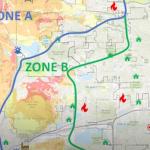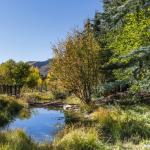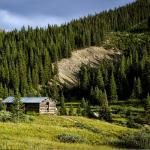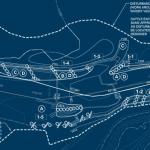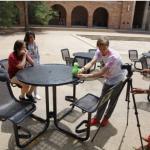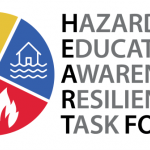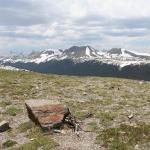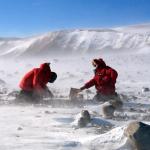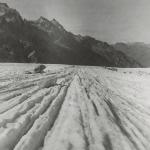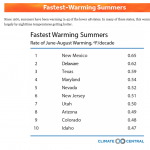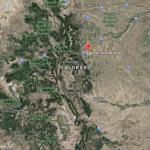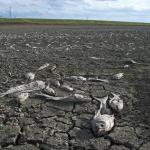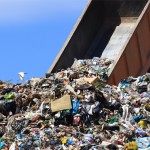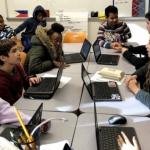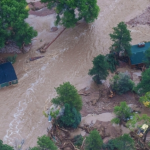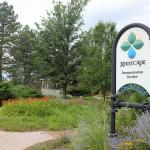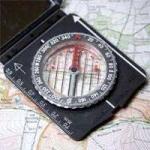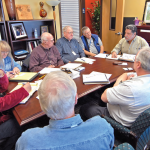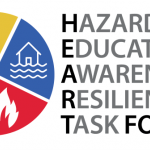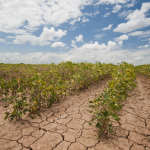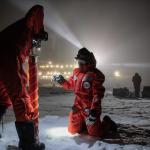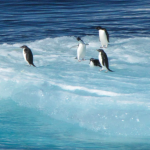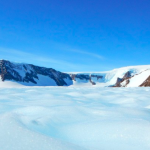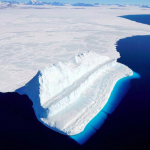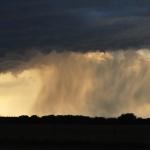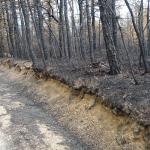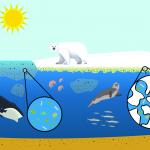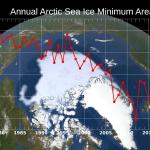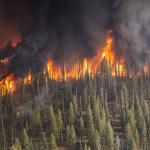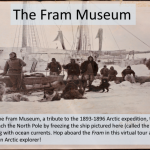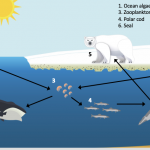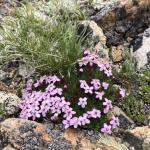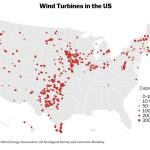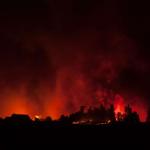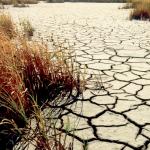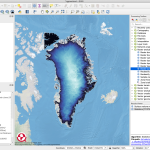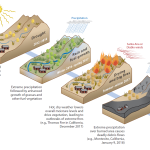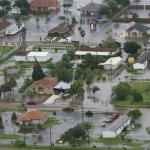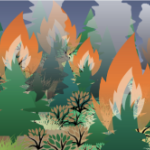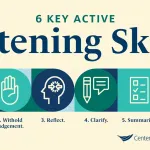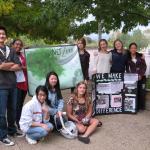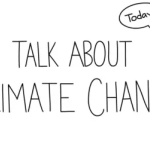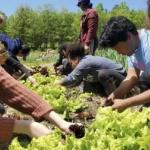Lesson Plans & Activities
HEART Force Flood Response Game
This lesson is best used after the Colorado Flood lessons in the HEART Force curricular unit, for students to apply their learning and respond to a hypothetical flood in their own community.
This interactive game has students work in three “zone response teams” to solve community challenges that arise during the course of an extreme flooding event by using available individual and community resources.
The Vocabulary of Hazards
We suggest teaching this lesson to introduce the unit as it will benefit students in their understanding of natural hazards throughout the entire HEART Force Unit.
This lesson uses a matching game to build students' understanding and familiarity with different terms used in the world of resiliency planning.

Envisioning a Resilient Future
We suggest teaching this lesson to introduce the HEART Force Unit.
In this lesson, students create a vision for the future of their community and identify what resources are most important to them as a starting point for resilience planning.

HEART Force Wildfire Response Game
This lesson is best used after the wildfire hazard lesson in the HEART Force curricular unit, for students to apply their learning and respond to a hypothetical wildfire in their own community.
In this interactive game, students work in three “zone response teams” to solve community challenges that arise during the course of a wildfire event by using available individual and community resources.
HEART Force Drought Game
This lesson is best used after the Colorado Drought lessons in the HEART Force curricular unit, for students to apply their learning and respond to a hypothetical drought in their own community.
In this interactive game, students work in three "resilience teams" to solve community challenges that arise during the course of an extreme drought event by using available individual and community resources.
Flood Resilience in Colorado StoryMap
This is a lesson that can be used to get ideas and prepare for the Community Resilience Expo.
Students interact with a flood StoryMap to explore the Colorado Resiliency Framework.
Wildfire Resilience in Colorado StoryMap
This is a lesson that can be used to get ideas and prepare for the Community Resilience Expo.
Students interact with a wildfire StoryMap to explore the Colorado Resiliency Framework.
Exploring Local Hazard Mitigation Plans
This lesson is part of the Community Resilience Expo, a culminating event for the HEART Force curriculum unit, where students will share what they’ve learned during the hazard lesson and the role-playing game.
In this lesson, students will explore their county Hazard Mitigation Plan to gain understanding about the hazard in their area (flooding, wildfire, or drought), including historic hazards, probability of future occurrences of the hazard, and vulnerability of the area to the hazard.
Design a Resilient Future
This is a lesson that can be used to get ideas and prepare for the Community Resilience Expo.
In this lesson, students will work in small groups to develop an idea to increase community resilience, utilizing Design Thinking.
Filmmaking: Pre-Production
This is the first part of a 3-part unit on the filmmaking process for both formal and informal education settings.
This lesson has students explore science content, decide on the topic for their film, and do all the preparatory work before filming begins.
Sharing Science with Film: A Guide to Student Productions
The examples and lesson plans provided in the educator guide emphasize scientific film topics; however, the methods shared throughout Sharing Science With Film: A Guide to Student Productions are applicable to films around all topics and genres.
Sharing Science With Film: A Guide to Student Productions is a guide for educators, and provides a how-to manual for instructing youth on how to produce short films.

Filmmaking: Production
This is the second part of a 3-part unit on the filmmaking process for both formal and informal education settings.
In this lesson, students film interviews with content experts as well as additional B-roll footage, and film mentors help students find existing footage and media to supplement their films.
Filmmaking: Post-production
This is the third part of a 3-part unit on the filmmaking process for both formal and informal education settings.
This lesson teaches students about editing films and respecting licensed materials, while also ensuring they receive the support they need to ensure completion of their films.
Community Resilience Expo Overview
The Expo is best taught at the end of HEART Force unit, after students are familiar with the hazard.
The Community Resilience Expo is a culminating event for the HEART Force curriculum, where students will develop and present original ideas to increase resilience in their community.

Exploring the Arctic
This is the first activity of a three-part curriculum about Arctic climate; the activities may be used independently or in sequence.
This activity introduces students to the Arctic and Arctic climate. Through a virtual exploration of the geography of the Arctic students become familiar with the region. They are then introduced to meteorological parameters that Arctic research teams use.Do you really want to visit the Arctic?
This is the second activity of a three-part curriculum about Arctic climate; the activities may be used independently or in sequence.
This jigsaw activity introduces students with Arctic weather data using a role-playing activity that has students read and interpret graphs while considering the optimal time to plan a research mission to the Arctic.Exploring Arctic Climate Data
This is the third activity of a three-part curriculum about Arctic climate; the activities may be used independently or in sequence.
In this final activity, students use authentic Arctic climate data to explore albedo and its relationship to seasonal snowmelt as a self-reinforcing feedback mechanism, which is then applied to large scale global climate change.Why Are Cities Getting Hotter?
This is the first lesson in the Climate Resiliency Education High School Climate Unit.
During this lesson, students explore the increase in summer temperatures and describe the pattern as it relates to Colorado using a video by the Denver Post.
What is Special About Cities Compared to Rural Places?
This is the second lesson in the Climate Resiliency Education High School Climate Unit.
This lesson explores climate data at local, national, and global levels to determine that temperatures are changing all over the world, and that there are certain locations where temperatures are warming faster than the global average.
Why Are Cities and Other Regions of the World Getting Hotter?
This is the third lesson in the Climate Resiliency Education High School Climate Unit.
This lesson has students investigate how albedo is contributing to temperature increasing in some places, like cities, are increasing at faster rates than elsewhere.
How Do Humans Contribute to the Increase in Global Temperatures?
This is the fourth lesson in the Climate Resiliency Education High School Climate Unit.
Students explore the greenhouse effect in this lesson using a computer simulation and develop a model for how it works.
Is it Normal That World Temperatures Are Rising This Fast?
This is the fifth lesson in the Climate Resiliency Education High School Climate Unit.
This lesson explores if it is normal that world temperatures are rising at the currently observed fast pace.
What Impact do Increasing Greenhouse Gases Have?
This is the sixth and final lesson in the Climate Resiliency Education High School Climate Unit.
In this lesson, students utilize case studies to learn about the ways climate change is currently impacting people and other living things around the world.
How Can We Decrease Our Impact on the Earth’s Climate at our School?
This is the first lesson in the Climate Resiliency Education Design Challenge Unit which was designed to follow the middle or high school Climate Resiliency Education units.
In this design challenge lesson students explore the Denver Public School District’s solid waste plan and discuss how their school can save or decrease emissions by reducing solid waste at our school.
How Does Our School Food System Create Greenhouse Gas Emissions?
This is the second lesson in the Climate Resiliency Education Design Challenge Unit which is meant to follow the middle or high school Climate Resiliency Education units.
In this design challenge lesson, students examine their school food system and develop an investigation about food waste in order to know what should change.
How Can We Understand Waste and Emissions in Our School's Food System?
This is the third lesson in the Climate Resiliency Education Design Challenge Unit which is meant to follow the middle or high school Climate Resiliency Education units.
This lesson outlines for students how to design and carry out an investigation to audit their school’s food waste system.
How Can We Reduce Emissions Associated with Food Waste in Our School?
This is the fourth lesson in the Climate Resiliency Education Design Challenge Unit which is meant to follow the middle or high school Climate Resiliency Education units.
In this activity students utilize the data that is collected and propose solutions to mitigate food waste in their school.
How Can We Present Solutions for Food Waste and Emissions at School?
This is the fifth lesson in the Climate Resiliency Education Design Challenge Unit which is meant to follow the middle or high school Climate Resiliency Education units.
This lesson provides guidance for students to create and practice a presentation about their design challenge results that they developed in the previous lessons and how to present it to the school administration.
Adapting to Extremes: Exploring the Science of Floods in Colorado (High School)
This lesson is best taught at the beginning of a HEART Force unit, but it can also act as a stand-alone lesson to introduce students to floods in Colorado.
The way we choose to design our communities has impacted community risk and vulnerability to flooding; in this lesson, students will explore this concept by analyzing environmental data to classify patterns and practice communicating their findings.
Adapting to Extremes: Exploring the Science of Wildfire in Colorado (High School)
This lesson is best used as part of the HEART Force curricular unit, but it can also act as a stand-alone lesson to introduce students to wildfire in Colorado.
Students build an understanding of wildfire in Colorado using multiple data sources in a jigsaw format.
Wildfire Virtual Expo
This lesson provides a virtual alternative to the HEART Force Expo curriculum.
This is a streamlined lesson for students to prepare for a Community Resilience Expo, focusing on wildfire.

Flood Virtual Expo
This lesson provides a virtual alternative to the HEART Force Expo curriculum.
This is a streamlined lesson for students to prepare for a Community Resilience Expo, focusing on flood.

Drought Virtual Expo
This lesson provides a virtual alternative to the HEART Force Expo curriculum.
This is a streamlined lesson for students to prepare for a Community Resilience Expo, focusing on drought.
Creating a Compass from a Magnet
Project EXTREMES lessons were intended to stand alone, but this lesson can be included in a unit on the Earth’s interior.
In this lesson, students create a compass and apply their reasoning about magnetism to how compasses work to help us navigate around the globe while utilizing the Earth’s magnetic field.

Communicate Existing Plans
This is a guide that can be used for a pathway for the Community Resilience Expo.
In this sub-unit, students will learn more about their community’s resilience plans, choose a specific topic to focus on, and develop a product to communicate the plan to their peers and/or their community.
HEART Force Curriculum Overview
This unit consists of several lessons and can take anywhere from 1 to 6 weeks to teach, depending on which lesson teacher choose to incorporate.
The HEART Force curriculum builds understanding of wildfire, flood, or drought in the context of place-based community resilience.

Adapting to Extremes: Exploring the Science of Drought in Colorado (High School)
This lesson is best taught at the beginning of a HEART Force unit, but it can also act as a stand-alone lesson to introduce students to drought in Colorado.
Humans have been affected by severe drought throughout history; in this lesson students explore this concept by analyzing environmental data to classify patterns and practice communicating their findings.
Exploring the New and Old Arctic
This unit consists of 6 lessons, each tied to NGSS nature of science understandings
In this MS/HS unit, students compare and contrast Arctic expeditions of the past (1893-1896 Fram expedition) and the present (2019-2020 MOSAiC expedition) to prepare for the Arctic of the future.Arctic Feedbacks: Not All Warming Is Equal
This storyline unit consists of 10 lessons, each tied to NGSS Earth's systems standards
In this MS/HS unit, students engage with 360° virtual reality tours, authentic Arctic datasets, and app-based labs to construct models and explanations for the unit driving question, "Why might the Arctic be warming twice as fast as the rest of the world?"What do we already know, or think we know, about climate & Antarctica?
This is the first lesson of a five-part curriculum about Antarctic physical environments and ecosystems.
In this lesson, students will elicit initial ideas about climate, explore images of Antarctica, learn important vocabulary, and synthesize how satellite imagery can help us understand climate change in Antarctica.How does the changing climate impact the penguins around Antarctica?
This is the second lesson of a five-part curriculum about Antarctic physical environments and ecosystems.
In this lesson, students investigate the life history characteristics of different Antarctic penguin species and identify the changes that their populations have experienced.Antarctic Life & Albedo
This is the third lesson of a five-part curriculum about Antarctic physical environments and ecosystems.
In this lesson, students explore the importance of albedo (or reflectivity) to penguins and the surfaces they inhabit and learn how penguin colonies may be mapped using satellites.
Why does the ice melt on the “Frozen Continent”?
This is the fourth lesson of a five-part curriculum about Antarctic physical environments and ecosystems.
After exploring albedo in the previous lesson, this lesson expands on more factors that lead to surface ice melt in Antarctica.Human Impacts on Climate Change: What will happen and what can we do about it?
This is the fifth lesson of a five-part curriculum about Antarctic physical environments and ecosystems.
In this lesson, students explore how human activities will continue to impact Antarctic ice, discuss human contributions to climate change, and investigate what we can do to stop/reverse these negative effects.
Precipitation Patterns Around the Globe
Project EXTREMES lessons were written to be stand alone lessons but can be incorporated into a larger unit.
Students apply their knowledge of the water cycle to investigate how annual precipitation patterns are related to geography and biology.

Soil Percolation: Where Does the Rain Go?
Project EXTREMES lessons were written to be stand alone lessons but can be incorporated into a larger unit.
This lesson activity has students conduct an experiment that reinforces one component of the water cycle.

What Color is the Sun?
The comic book can be used in informal education settings or as introductions to the topics covered the Solar Dynamics Observatory curriculum.
This comic book was developed with the Stanford Solar Center as part of their comic series Tales from Stanford Solar and explores questions like: What color is the Sun? and How do we study the stars?

The Future of Forests
This storyline unit consists of 9 lessons, each tied to NGSS life science standards
In this middle school unit supported by NASA, students engage with online interactives, authentic datasets, and citizen science protocols to construct models and explanations for the unit driving question, "How do landscapes recover after a wildfire?"A Changing Arctic Ecosystem
This storyline unit consists of 8 lessons, each tied to NGSS life science standards
The Arctic is warming more rapidly than anywhere else on Earth. One consequence of a warming Arctic is a dramatic decline in sea ice, an important habitat for many Arctic plants and animals. In this unit students will engage with 360° virtual reality tours, hands-on labs, and authentic Arctic datasets as they gather evidence to construct explanatory models for the unit driving question, "How might the decline in sea ice affect Arctic organisms large and small?"Data Puzzle: On a Budget
This data puzzle is a stand-alone lesson that is part of a larger collection of data puzzles.
The Arctic is currently warming at a rate faster than the global average, a phenomenon known as Arctic amplification. In this Data Puzzle, students analyze authentic Arctic datasets to construct explanatory models for the following question, "Why might the Arctic be warming faster than other places on Earth?"
Data Puzzle: Balancing Act
This data puzzle is a stand-alone lesson that is part of a larger collection of data puzzles.
Since the early 2000s, the Greenland Ice Sheet’s mass balance has been consistently negative, meaning more mass is being lost than gained. But this change in mass balance hasn’t always happened at the same rate. What could account for observed changes to the amount of ice in the Greenland Ice Sheet in recent decades?
Data Puzzle: To Reflect or Not to Reflect
This data puzzle is a stand-alone lesson that is part of a larger collection of data puzzles.
The color of Earth's surface determines how much of the Sun's energy is reflected or absorbed, where lighter-colored surfaces are more reflective (higher albedo). In this Data Puzzle, students analyze authentic Arctic data to construct explanatory models for the following question, "How might the Arctic’s albedo be affected by the observed decline in sea ice?"
Data Puzzle: It's All Connected
This data puzzle is a stand-alone lesson that is part of a larger collection of data puzzles.
What makes the Arctic climate system so unique is the sea ice, which influences the Arctic climate in many ways. In this Data Puzzle, students analyze authentic Arctic data to construct explanatory models for the following question, "What effect, if any, do leads (cracks in the sea ice) have on the transfer of moisture between the Arctic Ocean and atmosphere?"
Data Puzzle: Megafire - Rare Occurrences or the New Normal?
This data puzzle is a stand-alone lesson that is part of a larger collection of data puzzles.
Megafires have been a hot topic in the news over the past few years, but are they a new phenomenon? In this Data Puzzle, students analyze authentic wildfire data to construct explanatory models for the follow question, "How and why has the number of megafires have changed over time?"
VR Expedition: Explore the Arctic Aboard The Fram
This is part of a collection of VR experiences.
Take a virtual stroll through the Fram and learn all about Nansen and his crew's adventures in the Arctic with this virtual expedition. This is a stand-alone resource that is part of a MOSAiC VR collection.Data Puzzle: Megadrought in the Colorado River Basin
This data puzzle is a stand-alone lesson that is part of a larger collection of data puzzles.
Much of the western United States is experiencing drought conditions. In this Data Puzzle, students analyze authentic climate data to construct explanatory models for the following question, "What is causing the megadrought in the Colorado River Basin?"
Data Puzzle: What's the Limit?
This data puzzle is a stand-alone lesson that is part of a larger collection of data puzzles.
Moss campion is a hearty flowering plant that thrives in harsh arctic and alpine tundra ecosystems over a wide range of latitudes in North America. In this Data Puzzle, students analyze authentic moss campion growth and survival data to construct explanatory models for the following question, "How is the growth and survival of moss campion affected by latitude?"
VR Expedition: MOSAiC Ice Camp
Take a virtual tour of the MOSAiC Ice Camp in this virtual experience. This is a stand-alone resource that is part of a MOSAiC VR collection.VR Expedition: MOSAiC Distributed Network
Take a virtual tour of the MOSAiC Distributed Network, Fedorov, in this virtual experience. This is a stand-alone resource that is part of a MOSAiC VR collectionData Puzzle: Tracing Carbon Through the Arctic Food Web
This data puzzle is a stand-alone lesson that is part of a larger collection of data puzzles.
The Arctic is home to a huge variety of living things (humans included) that have adapted to harsh conditions. However, these conditions are changing as Arctic temperatures rise and sea ice declines. In this Data Puzzle, students trace the flow of carbon through the Arctic food web to construct explanatory models for the following question, "How might the decline in sea ice affect Arctic organisms large and small?"

Data Puzzle: The Tipping Point
This data puzzle is a stand-alone lesson that is part of a larger collection of data puzzles.
Plants like moss campion are uniquely adapted to the cold, dry climate characteristic of the tundra biome...but temperatures are on the rise. In this Data Puzzle, students analyze temperature and reproduction data to construct explanatory models for the following question "How is moss campion reproduction affected by temperature?"
Data Puzzle: Wind Farms of the Future
This data puzzle is a stand-alone lesson that is part of a larger collection of data puzzles.
Transitioning from fossil fuels to clean, renewable energy sources like wind is essential if the US is to reduce its carbon emissions. But where should new wind farms be constructed? In this Data Puzzle, students analyze surface roughness and wind speed data to construct an evidence-based explanation for the following question, "Where in the United States (lands and waters) should new wind turbines be constructed to generate the most energy?"
Geomagnetism Challenge
This lesson is centered around a data challenge using the CrowdMag application. The challenge includes live webinars, asynchronous videos, lesson plans, and the chance to win a raffle! The lessons and asynchronous videos can be used as stand-alone resources.
Individuals and classrooms are invited to join the GeoMag Data Challenge! Explore the power of community/citizen science, Earth's magnetic field, and data collection with us.
High School Wildfire Unit
This HEART Force curricular unit includes all lessons for the High School Wildfire curriculum.
The HEART Force Curriculum builds an understanding of wildfire, flood, or drought in the context of place-based community resilience.
High School Flood Unit
This HEART Force curricular unit includes all lessons for the High School Flood curriculum.
The HEART Force curriculum builds an understanding of wildfire, flood, or drought in the context of place-based community resilience.
High School Drought Unit
This HEART Force curricular unit includes all lessons for the High School Drought curriculum.
The HEART Force curriculum builds an understanding of fire, flood, or drought in the context of place-based community resilience.
From Greenland to our Coasts: Exploring Sea Level Change with QGreenland
This unit consists of 3 lessons, each tied to NGSS life science standards
In this unit, students will explore how the Greenland Ice Sheet is changing and why that affects coastal communities worldwide. Students will view authentic Greenland geospatial data and learn how to create flood maps to assess local risk in QGIS.
Drifting North Polar Planetarium
In this MS/HS lesson, students will be transported to the Arctic with the MOSAiC expedition, The Multidisciplinary drifting Observatory for the Arctic Climate, in an immersive classroom and field trip experience.ReVisioning Hazards
This is the first lesson in the Lake County Cascading Hazards unit, but can be used for any introduction to natural hazards curriculum.
In the first lesson of the Lake County Cascading Hazards Unit, students read a poem written by a local fire survivor, and utilize a visualization practice to build personal resilience.Cascading Hazards
This is the second of four lessons in the Lake County Cascading Hazards unit.
In the second lesson of the Lake County Cascading Hazards unit, students dig into local stories and datasets, and learn about the connections between natural hazards.Take Action
This is the last of four lessons in the Lake County Cascading Hazards unit.
In the last lesson of the Lake County unit, students develop idea to increase resilience to hazards in their own community.Lake County Cascading Hazards Unit
The unit has four lessons in total.
This unit builds an understanding of five natural hazards and their connections in the context of place-based community resilience.Social Vulnerability to Natural Hazards
This is the third of four lessons in the Lake County Cascading Hazards unit. This lesson can also be used in the HEART Force Curriculum.
In the third lesson of the Lake County Cascading Hazards unit, students learn about social factors that might make one group more vulnerable to a hazard than another.Data Puzzle: Wildfire, Drought, and the Future of Forests
This data puzzle is a stand-alone lesson that is part of a larger collection of data puzzles.
Wildfires are burning more and more of the forests across the western United States. In this Data Puzzle, Data Puzzle, students analyze post-fire forest recovery datasets as they gather evidence to construct explanatory models for the following question, "How do climate conditions impact the recovery of forests after a wildfire?"
The Emotions Wheel
This activity is a stand-alone exercise part of seven activities from the Climate Mental Health Support Activities.
Emotion wheels have been a visual tool used by psychologists for decades to help people better understand and interpret their feelings. This activity is for people of all ages and can be done with family members, in a classroom, with friends, work colleagues, etc.
Active Listening Skills
This activity is one of seven activities in the Climate Mental Health Support Activities.
In this lesson, students will identify emotions they experience as they learn about the impacts of climate change. In pairs, students will practice active listening skills as one student describes their emotions to the partner who applies active listening skills. They then flip roles and the other student describes their emotions while the partner listens.
Facilitating Discussions and Creating Solidarity
This activity is one of seven activities in the Climate Mental Health Support Activities.
Talking about emotions related to climate change can help youth to process emotions, move on, and develop trust and connection with others through shared solidarity. In this lesson, students will discuss their thoughts and feelings about climate change with others. Consider teaching the Emotions Wheel and Active Listening activities before this in order to help students develop language and discussion skills.
Nature Appreciation
This activity is one of seven activities in the Climate Mental Health Support Activities.
In this lesson, students will play, explore, appreciate, and practice perspective-taking in nature. All of these actions help positively connect youth to nature, and instill an ethic of care for the environment.
Connecting with Special Places in Nature
This activity is one of seven activities in the Climate Mental Health Support Activities.
In this lesson, students will take time to connect to a place that is special to them.
Visioning Possibility
This activity is a standalone exercise that is part of one of seven activities from the Climate Mental Health Support Activities.
In this lesson, students will find inspiration from innovative solutions, envisioning a hopeful future and their role in it.
Climate Solutions
This activity is a standalone exercise that is part of one of seven activities from the Climate Mental Health Support Activities.
In this lesson, students will participate in a short scavenger hunt to familiarize themselves with climate change mitigation strategies and solutions for decreasing heat-trapping emissions.
You are a Climate Leader
This activity is a stand-alone exercise part of seven activities from the Climate Mental Health Support Activities.
In this lesson, students will read brief biographies of youth climate activists and then reflect on how they can take climate action in their own lives. This lesson is best suited as the end of a unit or lesson on climate change as it requires some background knowledge on the causes of current climate change and potential mitigations or solutions.
Module 1: Exploring the Glacier Basin System
This Module consists of five Units, walking students through an overview of the glacier basin system, exploring glacier mass balance, albedo, and surface melt, and looking inside and underneath the glacier. The Units also cover the transition from the glacier margin to land and system responses to climate change.
Earth's polar environments have undergone rapid change during the 21st century and scientists have generated important new data and made groundbreaking insights. Despite growing interest to bring polar-focused material into the undergraduate classroom, curriculum development has lagged. Polar Space and Places, or PolarPASS, is connecting polar-focused material with innovative teaching methods to advance STEM undergraduate education and increase polar knowledge.
Module 2: Long-term Spatial Transformations of the Glacier Basin System
Module 2 is designed to follow after Module 1. Instructors may choose to use Module 2 independently, but may want to consider some additional introductory materials if they are not beginning with Module 1. Module 2 consists of four Units. The Units begin by exploring past ice margin retreat and processes of ice margin retreat and elevation change. The material then explores natural climate variability and anthropogenic forcings, and then examines potential future ice margin response to climate change.
Earth's polar environments have undergone rapid change during the 21st century and scientists have generated important new data and made groundbreaking insights. Despite growing interest to bring polar-focused material into the undergraduate classroom, curriculum development has lagged. Polar Space and Places, or PolarPASS, is connecting polar-focused material with innovative teaching methods to advance STEM undergraduate education and increase polar knowledge.


